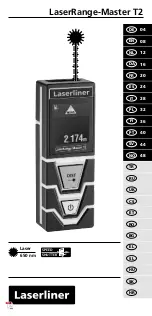
Reference •
Effects
195
However for some effect settings, dynamic modula-
tion may not have a noticeable result.
In the LCD, parameters which can be controlled using
dynamic modulation while you play are indicated by a
“
→
” symbol (except for 34: Rotary Speaker and 47:
Delay & Rotary Speaker). In this manual, such param-
eters are marked by a
symbol.
Shelving equalizer
Many of the iS35’s built-in effects have a two-band
shelving-type equalizer that can boost or cut the low
and high frequency ranges, and the equalizer will con-
tinue functioning even if the switch parameter is used
to turn the effect on/off. However the Stereo Delay
(13, 14), Stereo Chorus (19, 20), Exciter (28), and Trem-
olo (35, 36 effects) are exceptions.
If you wish to listen to the un-equalized sound while
editing a program, you will have to set the effect selec-
tion to 00:No Effect to turn off both effect processors.
Settings for each effect
Explanations for each of the 25 effect types are given
below.
00: No Effect
When 00: No Effect is selected, effects will not be
applied to the sound. Select this if you want the sound
to be dry, with no effects.
As an alternative to selecting No Effect, you can also
turn off the effects by using an optional foot switch.
However the foot switch is designed for realtime con-
trol while you play, while selecting No Effect is used
when no effects are to be applied to the sound at all.
01…09: Reverb
Reverb adds reverberance to the sound, creating a
more natural impression. This is the most frequently
used effect.
The iS35 provides nine types of reverb effect.
01: Hall
simulates the acoustics of a small concert hall,
such as might be used by a string quartet or acoustic
jazz band.
02: Ensemble Hall
is a slightly larger hall, suitable for
orchestral or brass ensembles.
03: Concert Hall
has greater emphasis on the early
reflections, and is suitable for full orchestras.
04: Room
reproduces the feeling of a standard room.
05: Large Room
simulates a larger room with greater
density, and is similar to gated reverb.
06: Live Stage
has a sound similar to what you might
hear in a gymnasium, and re-creates the atmosphere of
a rock concert.
07: Wet Plate
and 08: Dry Plate simulate plate reverbs,
devices which are often used to add emphasis to
vocals or solo instruments. Wet Plate is heavy, and Dry
Plate is light.
09: Spring Reverb
simulates a spring reverb device of
the type often used in guitar amplifiers.
For each of these, the sound passes through a two-
band shelving equalizer located before the reverb
effect.
Some of these reverb effects produce a rapid series of
initial delays which are known as Early Reflections.
The “wash” of reverberation will follow this, and
gradually die away.
Reverb time
Depends on
the effect
Set the time over which the
reverberation decays
P
Pre delay
0…200 ms
Set the delay from the direct
sound until when the early
reflections begin. Higher values
will cause the reverberation to be
more distinct, like an echo.
EQ
Pre Delay
Reverb
Dry Signal
Left
Right
Mix
Mix
Dry Signal
Dry
Rev Time
Pre Delay
E.R Level
Содержание iS35
Страница 1: ...AI2 Synthesis System User s Guide Interactive Music Workstation iS35...
Страница 9: ...GETTING STARTED...
Страница 71: ...REFERENCE...
















































